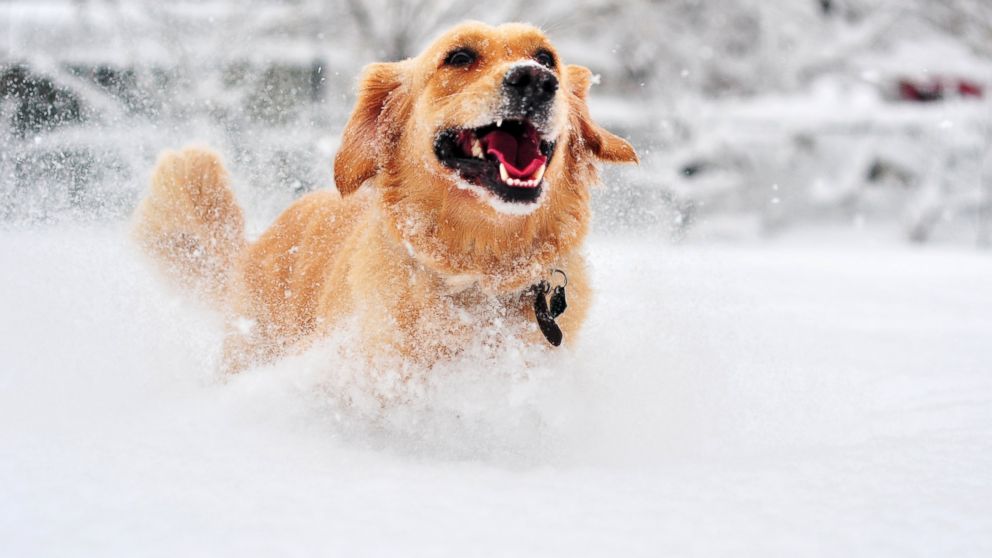6 Pet Safety Tips for the Extreme Cold
Check those paws and elevate sleeping areas off the ground.

Feb. 4, 2014— -- As much of the country continue to endure snow, sleet and ice, it's important to remember that four-legged friends require special care when the temperature drops.
Dr. George Melillo, Northeast regional medical director for Banfield Pet Hospital, which operates 800 locations throughout the U.S., shared with ABC News his tips for taking care of pets in extreme cold.
Keep a Cap on PlaytimeEven if Fido loves running through the fluffy piles of snow, extended exposure to the cold can be damaging to a pet's health. "It is recommended not to leave pets outside when the temperature drops below freezing," said Melillo. "Pets that are left outside for too long can suffer from hypothermia and frostbite."
Not only that, but extremities, such as ear tips, paws and the end of the tail are particularly susceptible to cold injuries, he said. For this reason, limit the time your pet spends in the cold. To determine how long is too long, keep a close eye on your dog to make sure they look comfortable. "Some dogs can stay outside longer than others," said Melillo. "For example, breeds such as Malamutes fare much better in cold weather than Chihuahuas."
Don't Go Shaving"Dogs with longer coats will be warmer in winter, so it is advised not to shave a dog's coat down to the skin," Melillo told ABC News. So no matter now cute Buffy looks when freshly shorn, it's best to wait until spring.
Protect Those PawsWhen a dog comes inside after being outdoors in the snow or ice, pet owners should wipe off its paws, legs and abdomen thoroughly to protect from ice and de-icing chemicals, said Melillo. "Pet owners may notice their dog's paw pads bleeding from a coating of snow or ice," he continued. "Booties can help protect against this condition." Additionally, if a dog is comfortable in clothing, Melillo recommends dressing them in "a sweater or coat with a high collar or a turtleneck that covers the dog from the tail to tummy" to prevent losing body heat.
Make Naptime ToastyA dog's sleeping space is another area where owners can warm things up. "The dog house should be off the ground with a bed, warm blanket or pillow, or lined with straw as insulation," said Melillo. Size is also a concern. "The dog house should be large enough for the pet to stand and turn around comfortably, but not much larger, or the pet's body won't be able to heat the area."
Laptime is Also Important"Water bowls left outside can become frozen and the pet won't be able to stay hydrated," warns Melillo. "A pet can also damage its paws trying to break through icy surfaces." He advises pet owners to check their pet's water frequently or purchase a heater for the water bowl. It's also not a bad idea to consult with your vet about increasing nutrition during the winter, as more calories are burned in cold weather.
Manually Check Your AutomobileNow that you've made sure your pet has a warm, safe space, remember that neighborhood animals may seek refuge in unexpected places. "When the temperatures drop, pets look for ways to keep warm," said Melillo. "Cats, specifically, may climb onto vehicle engines to seek warmth during cold weather and severe, sometimes fatal injury can result from being struck by a moving fan belt."
Melillo suggests pet owners knock on or check under the hood before starting a vehicle "and honk the horn to startle any pets" that may have sneaked underneath for shelter.




